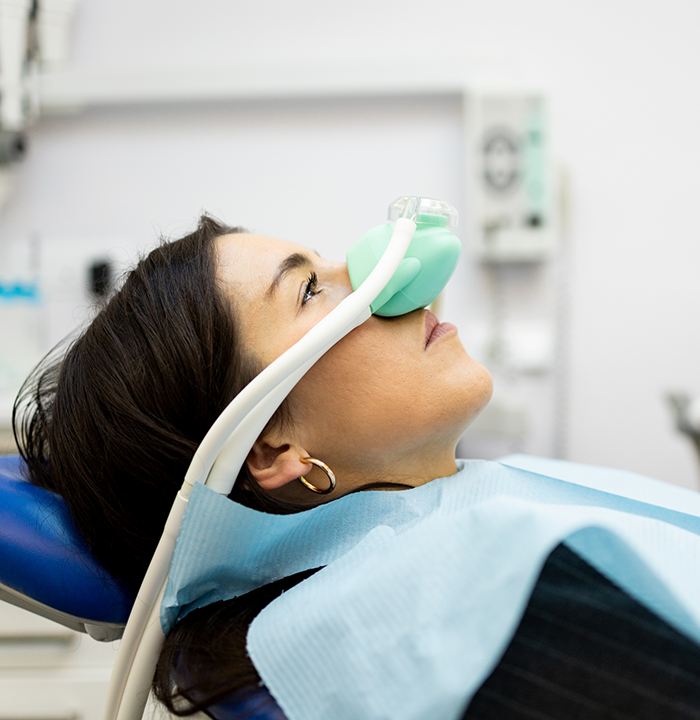These days, dental-related anxiety is a fairly common issue – it’s estimated that
over one-third of the US population suffers from this debilitating condition! Luckily,
with the advancements in technologies and techniques, a lot of patients’ fears are
quelled as soon as they enter our dental office doors and meet our experts!
However, in cases where that anxiety still lingers, we’re happy to offer multiple safe
dental sedation options. To learn more about how we can assure a smooth, pleasant
dental visit with the help of sedation dentistry in Spring, feel free to give our dental practice a call today.
Nitrous Oxide Sedation

You’re probably familiar with the other name for this type of sedation dentistry – it’s normally
referred to as “laughing gas.” Once you’re seated for your appointment, you’ll be
fitted with a soft nasal mask that will allow you to breathe in the sedation, which is
a mixture of nitrous oxide and oxygen. You’ll soon feel warm feelings of euphoria,
which will last for the entire duration of treatment and fade by the time you’re
ready to head home.
Oral Conscious Sedation

We normally recommend oral conscious sedation for patients with moderate dental
anxiety, or patients who simply cannot receive nitrous oxide. It’s also useful for
certain complex procedures. Patients are prescribed a pill, like Valium, before their
appointment, so that by the time they’ve arrived and sat down in the treatment
chair, the pill’s effects have started kicking in. You’ll still be conscious and
responsive to verbal commands and physical stimuli, but you’ll feel mostly at ease
and a little drowsy.
IV Sedation

IV sedation dentistry in Klein refers to the method of administering sedatives intravenously,
or directly into the patient’s bloodstream. This service is offered in-office from an
anesthesiologist for treatment like wisdom tooth removal and more extensive
procedures. During the process, all vital signs are closely monitored, and patients
rarely experience any negative or lingering side effects. This method is typically
reserved for patients who are undergoing lengthy or inherently complex dental
procedures, such as oral surgery, as well as those with severely debilitating dental
anxiety. Although, it can also be used if a patient isn’t able to benefit from another
form of sedation.




